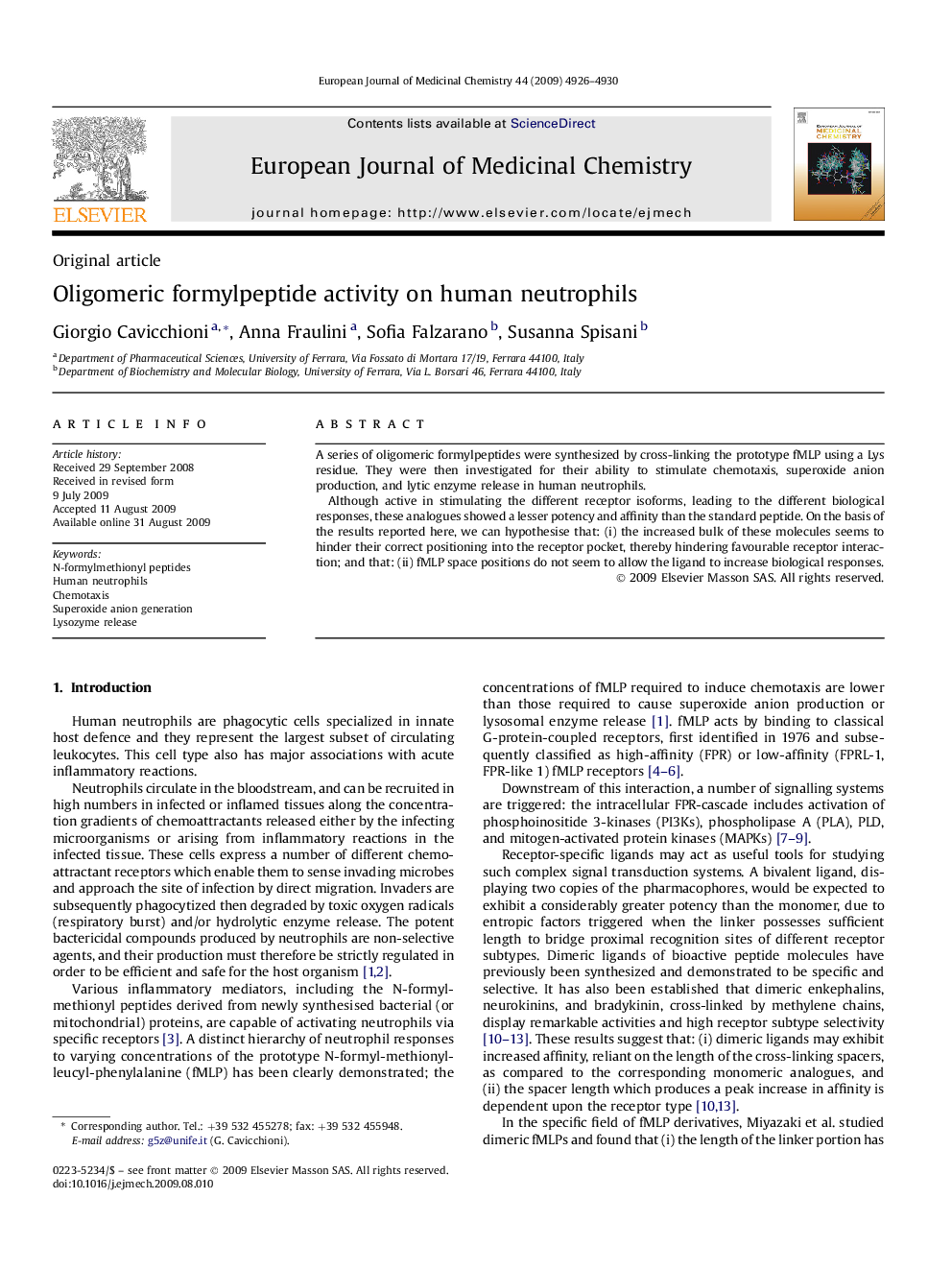| Article ID | Journal | Published Year | Pages | File Type |
|---|---|---|---|---|
| 1397881 | European Journal of Medicinal Chemistry | 2009 | 5 Pages |
A series of oligomeric formylpeptides were synthesized by cross-linking the prototype fMLP using a Lys residue. They were then investigated for their ability to stimulate chemotaxis, superoxide anion production, and lytic enzyme release in human neutrophils.Although active in stimulating the different receptor isoforms, leading to the different biological responses, these analogues showed a lesser potency and affinity than the standard peptide. On the basis of the results reported here, we can hypothesise that: (i) the increased bulk of these molecules seems to hinder their correct positioning into the receptor pocket, thereby hindering favourable receptor interaction; and that: (ii) fMLP space positions do not seem to allow the ligand to increase biological responses.
Graphical abstractOligomeric formylpeptides 1-4 were prepared and screened for their ability to stimulate chemotaxis, superoxide anion production, and lytic enzyme release in human neutrophils. These compounds do not seem to allow the ligand to increase biological responses with respect to the reference fMLP.Figure optionsDownload full-size imageDownload as PowerPoint slide
